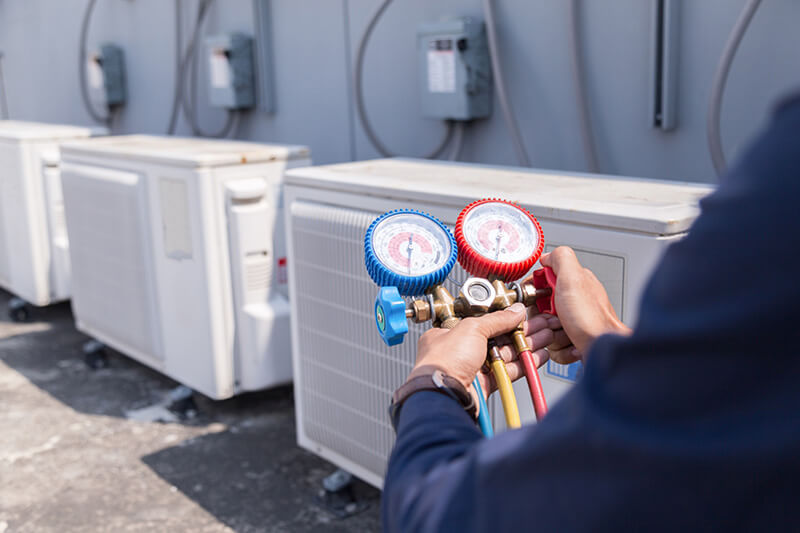Discover Comprehensive Cooling And Heating Solutions for All Your Cooling And Heating Demands
In the world of home comfort, the option of an ideal Cooling and heating system plays an essential duty. Further expedition of these systems reveals the elaborate balance in between expense and performance.
Comprehending Various Sorts Of Heating And Cooling Solutions
HVAC systems, vital for regulating indoor climate, differ commonly to match various atmospheres and building demands. Central systems, among the most common types, use a network of air ducts to disperse conditioned air throughout a building. These systems normally include elements like furnaces, ac unit, or heatpump. In contrast, ductless systems, such as split, multi-split, or mini-split systems, provide direct air conditioning and home heating to specific areas without the demand for ductwork, using even more local control and potentially reducing power losses linked with ducting. Another alternative is the increasingly preferred geothermal warmth pump system, which uses below ground temperatures to give cooling and heating, using an eco-friendly option that can substantially lower energy usage in time.
Selecting the Right HVAC System for Your Home
Picking the ideal Cooling and heating system for your home includes cautious consideration of several aspects. The type of system-- whether a split system, crossbreed, or ductless-- need to straighten with the home's architectural style and existing ductwork to make sure optimum efficiency and convenience of setup.

The Value of Normal HVAC Upkeep
After picking the ideal Heating and cooling system, preserving its effectiveness and long life becomes the following action. Routine HVAC upkeep is essential for guaranteeing that home heating and air conditioning systems run at peak performance. Normal upkeep is an essential component of possessing a Heating and cooling system.
Usual HVAC Troubles and How to Address Them
Despite routine upkeep, HVAC systems can still run into a selection of common problems that affect their performance and functionality. Filthy filters can block air flow, decreasing system performance and stressing its components. Frequently replacing or cleansing filters can prevent this issue. One more frequent concern is thermostat breakdowns, which can create the a/c system Full Report to run excessively or not enough, causing discomfort and raised power costs. Checking and rectifying the thermostat can resolve this problem. Leaks in cooling agent lines likewise influence efficiency, needing expert detection and repair service. Furthermore, broken parts like capacitors and follower motors might fail, requiring prompt repair services to stay clear of more considerable damage and guarantee optimum performance.
Examining the Cost-Effectiveness of Cooling And Heating Upgrades
Why should property owners consider updating their Heating and cooling systems? Updating an A/c system can dramatically minimize power intake, leading to lower energy costs and boosted power effectiveness.
When examining the cost-effectiveness of these upgrades, it is essential to take into consideration the initial investment versus lasting cost savings. Typically, the greater upfront expense can be balanced out by the reduction in ongoing energy expenses and upkeep prices. Furthermore, numerous city governments use discounts and rewards for energy-efficient appliance acquisitions, making upgrades much more affordable.

Final Thought
Finally, Continue picking the appropriate cooling and heating system and ensuring regular upkeep are vital for optimum interior convenience and air top quality. Numerous systems supply tailored options, making it important to recognize the particular needs based on home size and regional climate. Addressing typical concerns without delay and considering energy-efficient upgrades can significantly boost system efficiency and cost-effectiveness. Ultimately, expert heating and cooling services provide a trustworthy path to attaining and maintaining a comfy, energy-efficient home environment.
In comparison, ductless systems, such as split, multi-split, or mini-split systems, supply straight air conditioning and heating to specific locations without the requirement for ductwork, providing more localized control and possibly minimizing energy losses connected with ducting. The type of system-- whether a split system, crossbreed, or ductless-- need to line up with the home's structural style and existing ductwork to ensure optimum performance and simplicity of setup.
